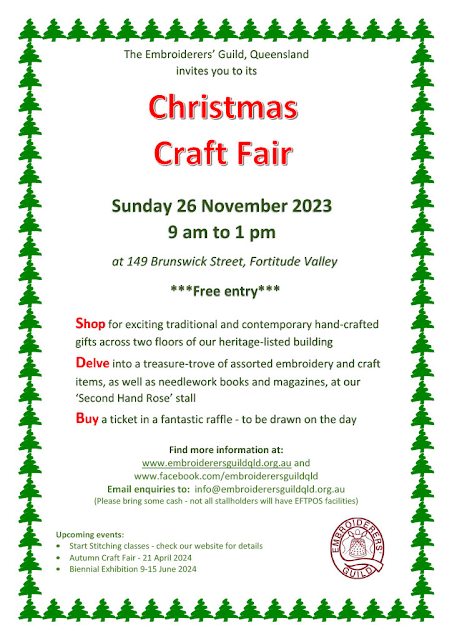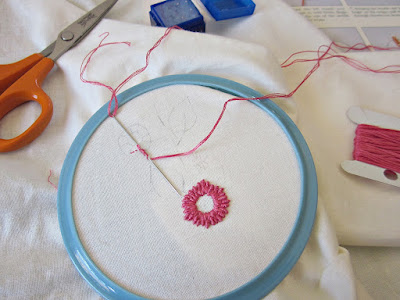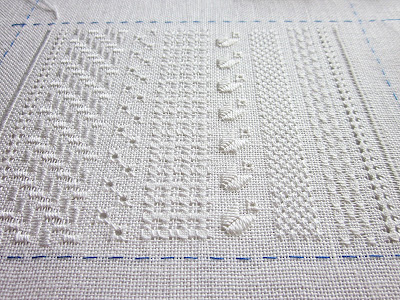There's an informal stitch along (SAL) at the Embroiderers' Guild of Queensland on the first Saturday of the month. It takes place during the regular meeting and each month there's a different sprig of flowers to stitch, with expert guidance on the stitches. The SAL is led by Deborah Love and there's also a lovely friendly exchange of ideas and information among the members.
I took along a box of well-used and much-treasured threads that had been passed on to me, knowing that I would need just a little bit of each colour for the first flower spray. I plan to make small articles rather than a cushion or a large picture.

The SAL started off with lazy daisy bullion stitch. (Also called 'Bullion Knot - Detached Chain' or 'Bullion - Lazy Daisy'.) After a few less than successful attempts at bullion stitch in the past, I have studiously avoided it - despite the excellent tutelage of Lynne Laver of the Cape Embroiderers' Guild whom we fondly refer to as the Bullion Queen. But, it was time to tackle this tricky stitch again - with an added lazy daisy stitch.

Well, I struggled. The needle just wouldn't pull through the loops. I tried a smaller milliner's needle. I tried wrapping the thread a little looser around the needle. I tried giving the needle a slight twist when caught on the wraps. Nothing made a much of a difference. Eventually I began to blame the thread. After all, a bad workman always blames his tools, or in this case, the thread. It seemed unusable.
But, thread conditioner came to the rescue! I separated out my three strands, pulled each one over the surface of the thread conditioner, then I put them together and pulled for one more coating.
Not only did the needle slide through the wraps more smoothly, but it was much easier to thread the needle too! The thread conditioner also ironed out some of the wrinkles in the thread making it less springy and easier to work with.
I would guess that the thread is very old. Natural fibres decompose over time especially in less than perfect conditions. Light, heat and moisture all play a part in the process. Perhaps some of the chemical bonds in this cotton have begun to deteriorate causing it to lose some of its smooth finish?
Although the Thread Heaven conditioner solved my problem, I would be wary of using this particular thread on a big important project. I still have a way to go for achieving really neat bullions, but I have made some progress. At least I have gotten over the mental block I had about doing them.
'Till next time, happy stitching!



















































